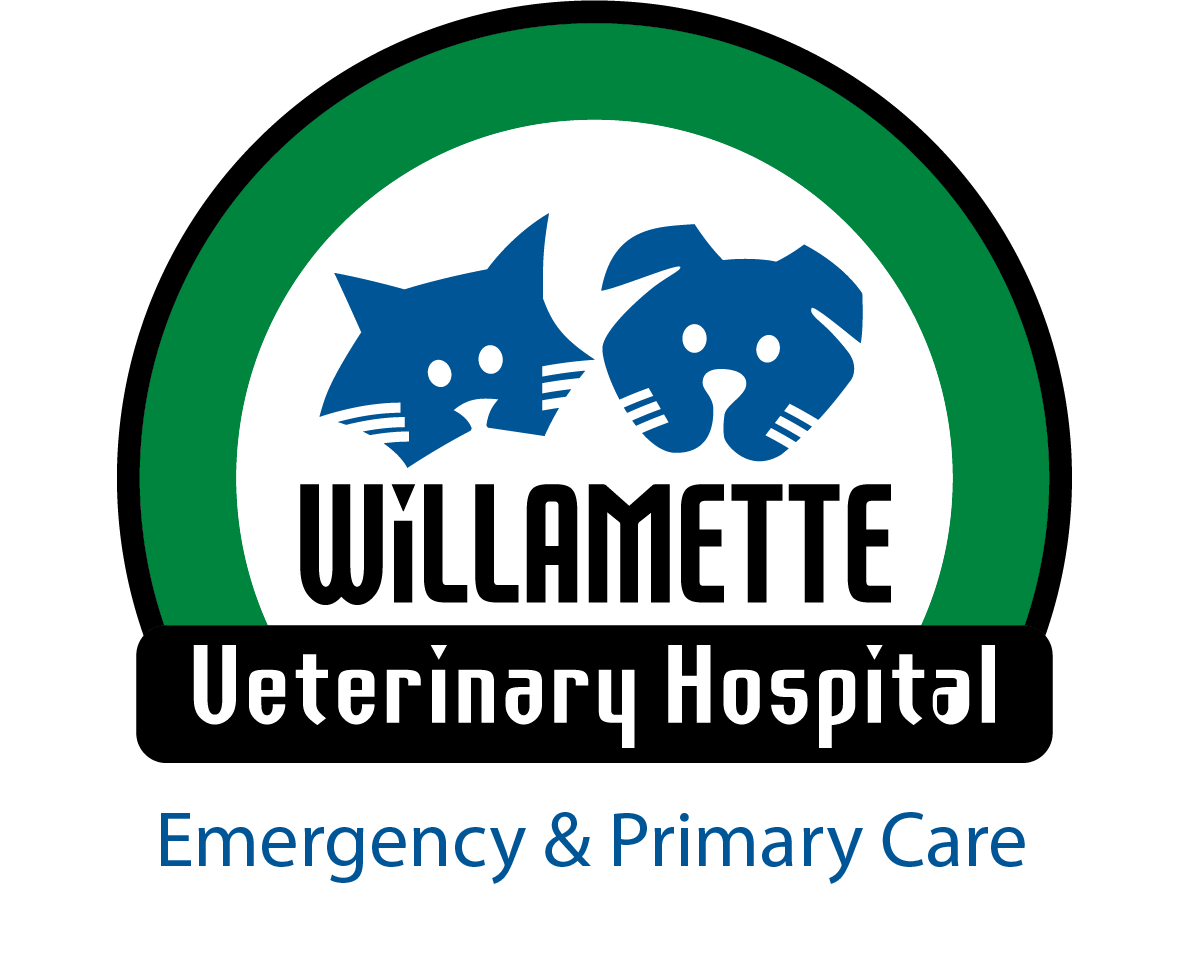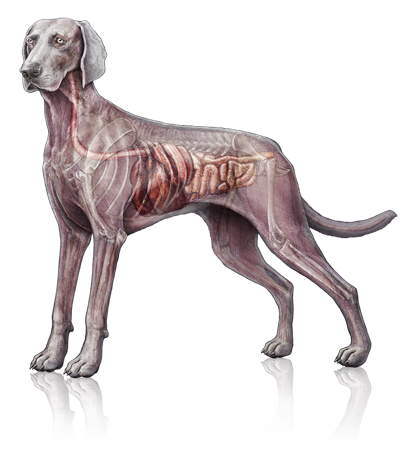
Problems related to the digestive system represent the most common medical problem seen by veterinarians. The digestive system begins at the mouth.
Food enters the mouth; chewing action from the teeth breaks food down to allow digestive enzymes in the mouth to begin the digestive process. From the oral cavity, food begins the long journey towards digestion and absorption. The road to digestion begins in the esophagus, a long tube that connects the mouth with the stomach. Once in the stomach, secretion of acids causes food constituents to separate. As food material enters the small intestine, secretions from the pancreas and gall bladder allow nutrients to be absorbed by the intestine. Beyond the small intestines lies the large intestine, which absorbs needed water for the body.
Indications of problems within the digestive system include: vomiting, diarrhea, lack of an appetite, weight loss, voracious appetite with weight loss, and lethargy.
Disease within the oral cavity is an ever growing concern for your pet’s overall health. Periodontal disease affects more than 85% of all pets over 4 years of age. Pets may not show overt signs of oral disease; the only indication of poor oral health may be foul smelling breath. Contrary to popular myth, the inside of your pet’s mouth is not clean. Germs and infection can spread from the oral cavity and lead to disease in other organ systems.
The majority of digestive problems result from dietary indiscretions and sudden dietary changes. Other digestive conditions include: intestinal parasites, ingestion of foreign bodies, toxin ingestion, intestinal inflammation, medications, hormonal and
metabolic imbalances, and cancer.
Anal Sac
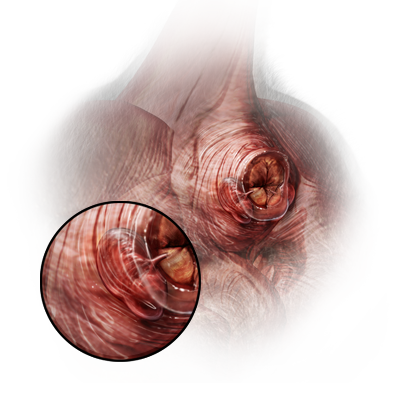
The anal sacs (also known as anal glands) rest on either side of the anus in the 4 and 8 o’clock positions. All dogs and cats have these scent glands that normally empty their secretions during defecation. Anal sac disease develops when the sacs cannot empty normally, such as with obesity, skin inflammation from allergies, loose stools/diarrhea, and tumors. Symptoms of anal sac disease (ASD) include scooting, excessive licking, pain, swelling, and/or foul-smelling discharge from the anal sacs.
Colon
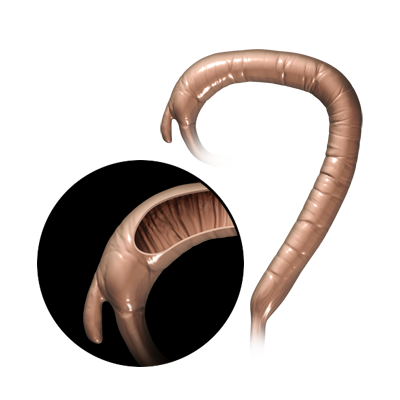
The large intestine, named for its large diameter, is shorter in length: about 10-20% of the length of the small intestine. Functions of the large intestine include:
- Water and electrolyte absorption
- Fecal storage
- Fermentation of ingested food fibers by beneficial bacteria
Inflammation of the large intestine, termed colitis, causes: straining to defecate and soft stool that may contain fresh blood and/or mucus. Dogs with colitis alone do not act sick beyond the soft stool. The most common causes of colitis in dogs include dietary indiscretion/intolerance and parasites.
Intestine
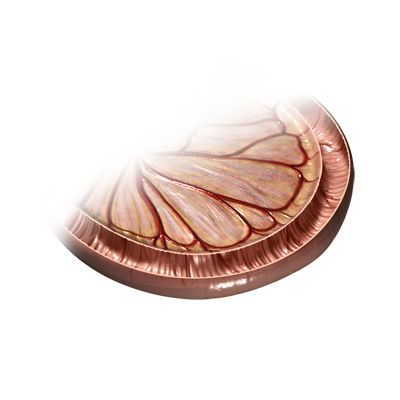
The small intestine, named for its small diameter, roughly spans 3-4 times the length of your dog’s body. As food material exits the stomach, it enters the small intestine and mixes with pancreatic and gall bladder secretions. These secretions cause breakdown of food nutrients to allow absorption of proteins, sugars, and fats. Dogs with small intestinal disease do not feel well; they may have vomiting and/or voluminous, watery diarrhea. By far, the most common cause of small intestinal inflammation is dietary indiscretion-raiding the trash can or eating something rotten from the park. Other common causes of small intestinal disease include: foreign body ingestion (e.g.: corn cob, toys), dietary intolerance, parasites, and viral infections.
Liver

A dog’s liver rests against the diaphragm, next to the stomach in the abdominal cavity. The liver performs many necessary functions to prevent illness:
- filters and detoxifies blood coming from the intestinal tract and other parts of the body
- aids in fat and sugar metabolism
- production of bile (to be later stored in the gall bladder), proteins, and vitamins
Young dogs with liver dysfunction often have abnormal blood flow through the liver (portosystemic shunts). Older dogs may develop inflammation, infections, cirrhosis (scarring of the liver) and cancer. Symptoms of liver disease may be obvious, such as jaundice (yellow tint to the skin); however, many liver diseases are insidious in onset and may be found incidentally with routine laboratory testing. Regular wellness testing allows early detection of liver disease to begin treatment before irreversible damage has been done to the liver.
Pancreas
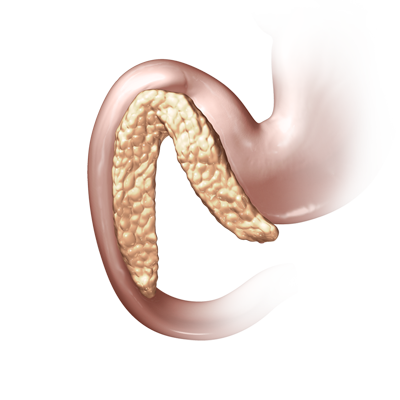
The pancreas, while being a small organ, delivers a significant impact on digestion of food and blood sugar regulation. Functionally, the pancreas is divided into two sections: 1) the larger exocrine pancreas releases digestive enzymes to breakdown fats and proteins in the diet and 2) the smaller endocrine pancreas releases blood sugar regulating hormones. Abnormalities of the pancreas include:
- Inflammation, termed pancreatitis. Dogs may succumb to pancreatitis after ingesting a high fat meal, trauma, and certain drugs. Dogs with pancreatitis are ill, experiencing vomiting, anorexia, and abdominal pain.
- Failure to produce enzymes and/or hormones as in exocrine pancreatic insufficiency and diabetes mellitus respectively.
- Cancer
Stomach
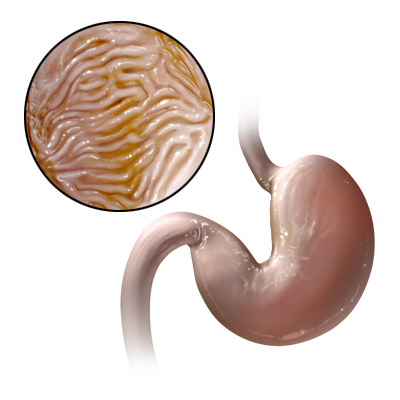
After exiting the esophagus, food enters the stomach to begin the digestive process. The stomach mechanically and chemically separates food into smaller pieces prior to entry into the small intestine. Vomiting is a hallmark sign of stomach irritation. Dogs are best known for their indiscriminate eating, so it is not surprising that the most common causes of vomiting include foreign body ingestion (e.g.: rocks, toys), garbage ingestion, and parasites. Large breed dogs may also be at risk of a life threatening condition known as gastric-dilatation-volvulus (GDV). Recovery from GDV requires emergency treatment and surgery to correct the displaced stomach.
Teeth
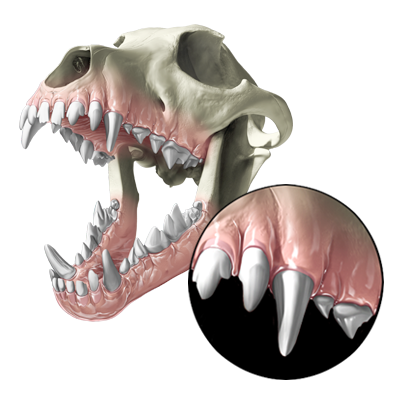
Does your dog have bad breath? The odor you smell is caused by an infection in your dog’s mouth. The most common cause of infection in your dog’s mouth is periodontal disease, which affects over 75% of dogs over 2 years of age. Periodontal disease progresses without intervention. Unresolved periodontal disease can spread beyond the oral cavity to involve organs, such as the kidneys, liver, and heart. The goal of periodontal therapy is to restore oral health and stop the infection that causes pain, tooth and bone loss, and organ damage. Dogs need their teeth cleaned regularly just as people do. Home dental care and regular periodontal therapy help to maintain oral health to ensure a healthy, pain-free pet.
What's Next
Call us to schedule an appointment
Meet with a doctor for an initial exam.
Put a plan together for your pet.

